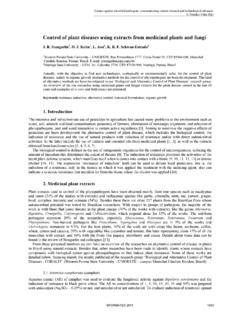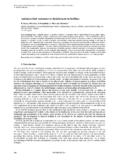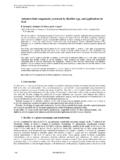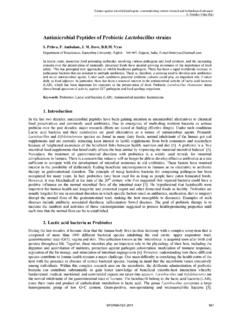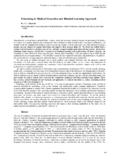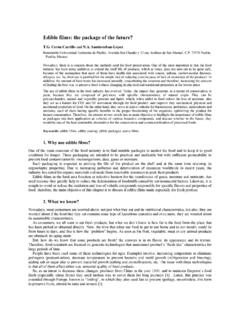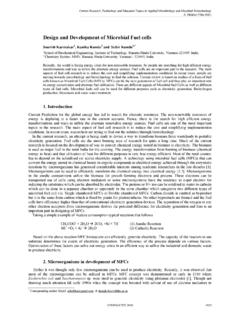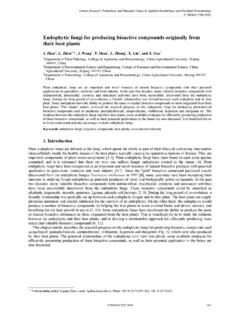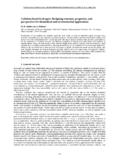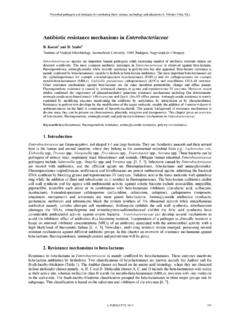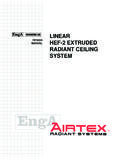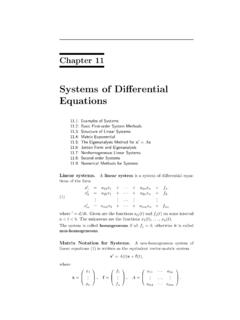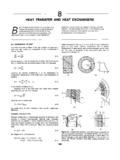Transcription of Effect of Heat Setting Process for Polymers
1 Effect of heat Setting Process for Polymers N. Avcioglu Kalebek1 and O. Babaarslan2 1 Department of Textile and Fashion Design, University of Gaziantep, Gaziantep, 27310, Gaziantep/ Turkey 2 Department of Textile Engineering, Cukurova University, 01310, Adana. Turkey heat Setting is an important step in the production of synthetic yarns. It imposes a thermo forming on fibres at temperatures higher than their glass transition temperature, and induces changes in fibre crystallinity, chain ordering, etc. These rearrangements are retained in the fibre as a memory- Effect , and affect both the physical properties of the fibres and the degree of dye uptake, shrink resistance, dimensional stability, temperature resistance, and wrinkle resistance. Polypropylene (PP) heat set bulked continuous filament (BCF) yarns is becoming widely used in machine-woven carpet manufacturing as a pile yarns.
2 Normally, man-made fibres are produced without any surface characteristics. In contrast, natural fibres, especially, wool, cotton are not straight, exhibit a marked configuration like helical and ribbon like with a wide inner hollow. However, man-made fibres are lack of natural structure such as resiliency and good appearance of the woven carpets. heat Setting plays a very important role in producing filament yarns with desired properties. This chapter aimed to investigate the Effect of heat Setting on the structure and properties of industrially produced heat set BCF PP yarns. The increase of temperature from 100 C to 140 C caused a decrease in the strength and elongation values of the BCF PP yarns and an increase in the crimp, shrinkage and yarn linear density values. Keywords: heat Setting ; thermoforming; filament yarn; extrusion; yarn mechanical properties; machine-woven carpet 1.
3 Introduction Fibres are the basic elements of a textile. They can be classified as belonging to one of the following two classes: (a) natural, and (b) man-made. Natural fibres are taken from animal, vegetable, or mineral sources. The most important animal fibres are wool and silk. Cotton and flax are the most important vegetable fibres. All these important natural fibres have been began to use in textile industry for thousands years ago; the bast fibres such as flax, in Egypt at least 7000 years ago; silk in China, wool in Europe and the Middle east, cotton in India and the Americas at least 500 years ago [1,2,3,4]. Manufacturing of man-made fibres began at the end of the thirteen century. Investigations carried-out in the USA on the production of a synthetic polyamide fibre were terminated in 1939 and the following years witnessed the development of manufacturing processes for other kinds of synthetic fibres (polyester, polyacryclonitrile and others).
4 In the course of the last 75 years, about 100 different kinds of man-made fibres were devised, which differ in the initial materials used for their manufacture, the methods of production and their properties [5]. Annual consumption of man-made fibres are increasing day by day because of using a large number of industrial, technical and engineering application. In the future, both world production and absolute fibre consumption per head are expected to rise, but production of natural fibres can be expanded only slowly. The expected substantial rise in the demand for fibres throughout the world during the coming decades must therefore be satisfied by increased use of man-made fibres. The fibres themselves, and hence the know-how involved in processing them, are therefore acquiring steadily greater significance [6].
5 Polypropylene was the last of the four major man-made fibres of the title to be commercialised. BCF PP man-made yarns are becoming widely used in machine-woven carpet manufacturing as a pile yarns. It is expected that this trend will continue in the near future. The importance of PP as a fiber is easy processing, low production cost and excellent properties. However, it withstands easily footfall, because it is not as resilient as other fibres [7,8]. BCF PP yarn production is a continuous Process , consisting melt spinning, drawing and texturing. After being extruded from the spinneret, the molten polymer starts solidifying. Finishing oil is applied to the solidified multifilament yarn, and the yarn is subsequently stretched by about three times in the drawing zones, so that it acquires enough orientation and consequently proper mechanical properties.
6 Texturizing of the continuous filament yarn is emerging from the drawing zone. This Process imparts volume, softness, dullness and cover factor of the yarn. After leaving the texturizer, the plug rests on a rotating cooling drum, where the Process of Setting the rather three-dimensional coils formed as a result of the compression in the plug. Parameters such as cooling air, air pressure and air temperature play an important role in specifying the final properties of textured yarns [2,9,10,11]. 2. heat Setting Process heat Setting is a term used in the textile industry to describe a thermal Process . A Process employing heat and pressure on fabric or carpet yarn to accomplish certain desired results (Figure 1). On fabric made of synthetic fiber (or of natural, chemically treated fibers), it is used to impart a crease or pleat that will last through washings or dry cleanings.
7 heat polymer science: research advances, practical applications and educational aspects (A. M ndez-Vilas; A. Solano, Eds.) _____199 Setting gives also shrink resistance, shape retention, and dye fastness. It is used on carpet yarns to improve resiliency and to set twist [1,12,13,14]. Chips Fig. 1 BCF carpet production Process chain from polymer to the product. The effects of heat Setting Process bring fibers, yarns or fabrics in dimensional stability, temperature resistance and other desirable attributes like higher volume, wrinkle resistance etc. heat Setting is also used to improve attributes for subsequent processes. Yarns tend to increased torqueing just after spinning, cabling or twisting (Figure 2). Before heat Setting When heat Setting is Applied After heat Setting Fig.
8 2 Stabilization Effect of heat Setting Process . heat Setting can influence or even eliminate this tendency to undesirable torquing. At the winding, twisting, weaving, tufting and knitting processes, an increased tendency to torquing can cause difficulties in processing the yarn. When using heat Setting for carpet yarns, desirable results include not only the diminishing of torquing but also the stabilization or fixing of the fiber thread. Both twist stabilization and stabilization of frieze Effect are results of the heat Setting Process . heat Setting benefits staple yarns as well as BCF yarns. heat Setting often causes synthetic fibers to gain volume as well. This volume growth is commonly described as "bulk development". All processes using temperature and/or moisture to give textiles one of the above mentioned attributes are known as heat Setting .
9 The term "thermal fixation" is used less frequently. In the carpet industry, the Process is exclusively called " heat Setting ". 3. Experimental Results In this chapter, 12 bobbins of BCF PP yarns (1600, 2000 and 2500 dtex, 44 filaments) are produced on an industrial production line. Tree different yarn linear density BCF yarn is produced by changing only flow rate of pump with same drawing ratio. The natural colour with trilobal filaments are produced by gravimetric feeding of 96 % polypropylene granulates (MFI=20) and % master batch to a Neugmac BCF machine. Properties of PP granulates are given in Table 1. BCF Spinning Cabling/Twisting heat Setting Tufting/Weaving Shearing Printing/Dyeing Carpet Back Coating Woven Carpet Raw Material MasterBatch & Finishing BCF Yarn Production Twisting heat Set Shipment OilSteam polymer science: research advances, practical applications and educational aspects (A.)
10 M ndez-Vilas; A. Solano, Eds.) _____200 Table 1 Properties of PP polymer granulates. Melt Flow Index (MFI (gr) at 228 C) 20 Melting Point ( C) 152 polymer Density (kg/lt) 0,74 heat Conduction Coefficient (J/ms C) 0,15 Specific heat (kJ/kg C ) 2,10 The production parameters of BCF yarn are given in Table 2. Spinning, twisting and heat Setting processes of filament yarns are operated in the mill conditions. So that, analyze of heat Setting Effect on yarn properties have been carried out on yarns which have used to produce as machine-woven carpets. For this purpose, four different Setting temperatures (100, 120, 130 and 140 C) are used as analysis variances. Table 2 Production parameters of BCF yarns. SPINNING (Neumag-NPT 2000) Extruder temperature ( C) 190, 200, 210, 220, 225 and 228 Extruder pressure (bar) 130 Draw ratio 1 Temperature of texturizer ( C) 140 Pressure of texturizer (bar) 8,5 Cooling air temperature ( C) 17 Cooling air humidity (rH) 70 % Cooling air velocity (m/s) 0,8 Yarn speed (m/min) 1100 Weight of cylindirical bobbin (kg) 3,5 TWISTING ( ) Yarn twist (turn/m) 100 Twist type 2 for 1 Winding speed (m/min) 52,4 heat SET (Power heat -Set GKK2500) Setting temperature ( C) 100-120-130-140 For experiments, mechanical properties of 100% PP carpet yarns have been tested according to ISO and ASTM standards.
